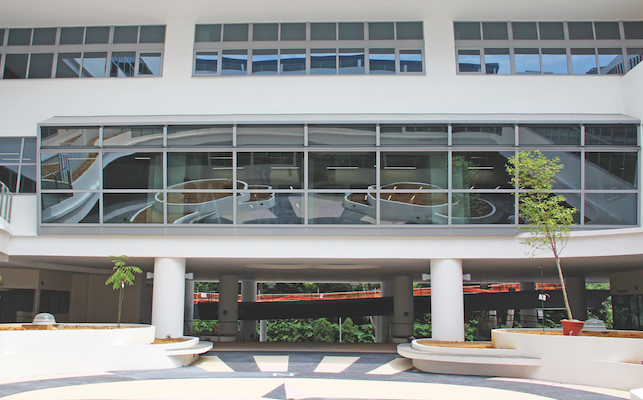3for2 Beyond Efficiency

A paradigm shift in the development of low-carbon high-rise buildings: integrating the design and construction of structural, mechanical, and electrical systems to lower material, space, and energy use
The 3for2 concept and pilot project in Singapore
In new commercial buildings in Singapore, up to one-third of enclosed volumes are typically occupied by technical systems and structural
elements, consuming valuable space that could otherwise be devoted to occupants. The standard air-based, centralised air-conditioning that are in current use are one of the key consumers of this space, though there seems little reason why this should continue to be the case in the future.
The ‘3for2’ concept is a design proposal for high-rise commercial building that virtually negates vertical space requirements for ceiling plenums and floor space requirements for air handling equipment. At the same time, it proposes to improve comfort of occupants and increase overall building energy efficiency by a factor of two. In optimal conditions, the opportunity may arise to construct 3 floors in the conventional space of 2 without impacting occupant floor-to-ceiling heights, hence the name ‘3for2’.
Elements of the ‘3for2’ concept were implemented over 2014-2015 by FCL researchers under the ‘3for2@UWCSEA’ pilot project. Over a two-year period, researchers oversaw the design, construction, and commissioning of a 550m2 test case of the ‘3for2’ concept in the administrative offices of United World College South East Asia (UWCSEA), a non-for-profit international school in Singapore.
The project showcases air-conditioning technologies that were previously rare to commercial buildings in South-East Asia, such as passive chilled beams and distribution ventilation systems. It also brought together interested industry and government partners through the sponsorship of Siemens Building Technologies and the Singapore Building Construction Authority, and this will help identifying the costs and economic benefits of the ‘3for2’ concept in the future. The ‘3for2’ pilot site at UWCSEA will stand as a living laboratory for FCL researchers until at least 2018.